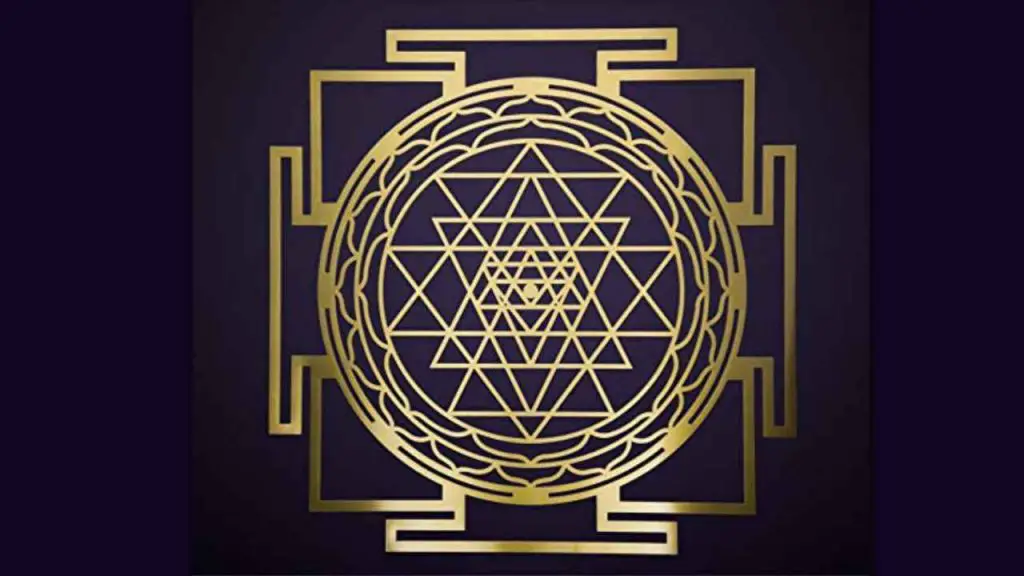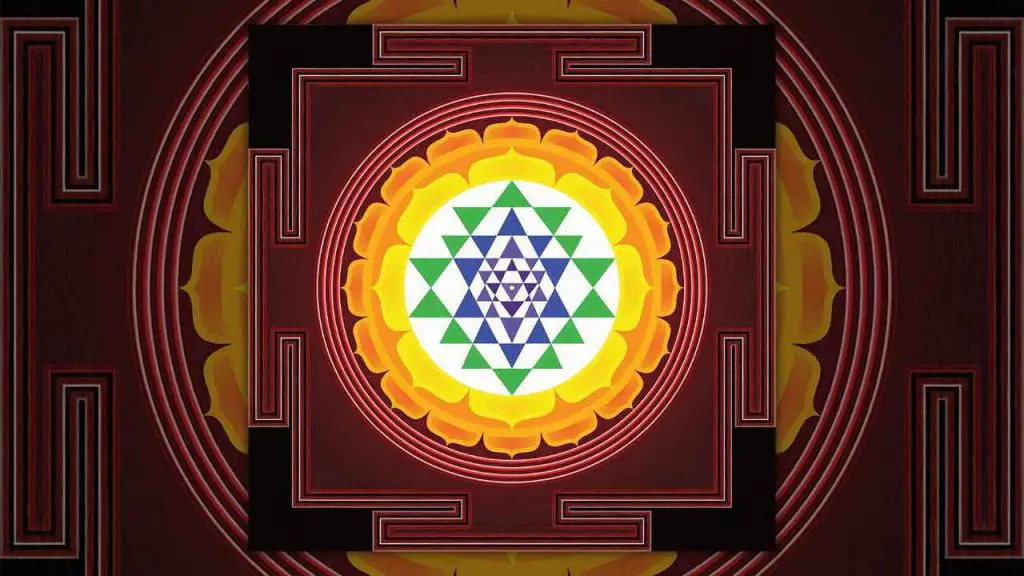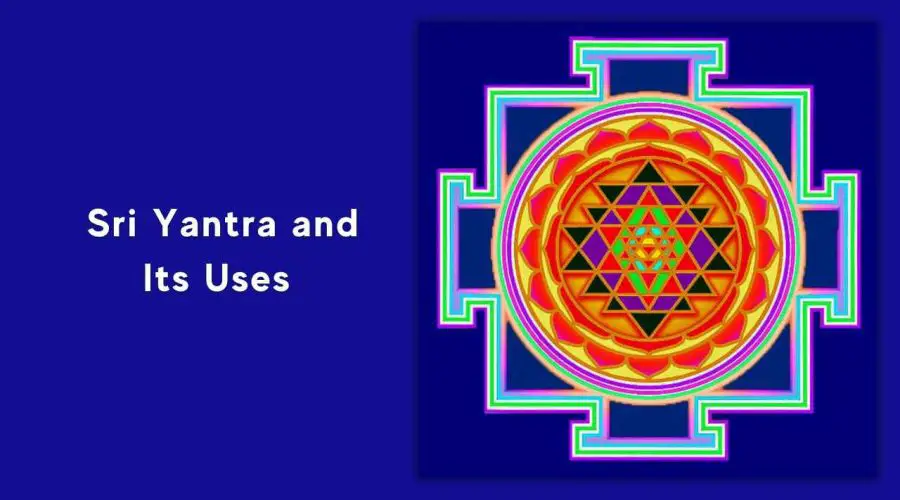A Comprehensive Guide to Sri Yantra
In case you have been searching for “Sri Yantra” or “Sri Yantra Symbol”, then you are at the right place.
What is Yantra?
In Sanskrit, “yantra” is derived from “yam,” which means “instrument” or “support,” and “tra,” which is derived from “trana,” which means “liberation from servitude.” A yantra is a device or tool that facilitates spiritual liberation via meditation and contemplation. There are numerous yantra designs associated with gods, principles, and planets. Designs for yantras, which are used in ceremonies and rituals, can be found on paper, bark, flower petals, ash, and rice.
For meditation activities or “Vastu,” the Vedic equivalent of feng shui, a yantra is etched on a gold-plated copper square plate. Priests then “charge” the plates, which means that the physical object is “tuned” to a particular vibration or energy. After being charged, the yantra is considered a sacred thing.
What is Sri Yantra?
Sri Yantra, also known as Sri Yantra or Sri Chakra, is one of the most potent and essential Yantras for achieving one’s goals. It is regarded as the mother of all Yantras because all Yantras originate from this diagram.
This ancient diagram possesses extremely potent cosmic abilities and the potential to focus your energies and desires to grant your wishes.
“Sri Yantra” translates to “Wealth Instrument.” It brings both material and spiritual prosperity into your life. Sri Yantra has the unique ability to grant all your wishes and transform your life permanently. The Sri Yantra is a form of a geometric mandala. A mandala is a plan, blueprint, or geometric pattern that reflects the universe’s metaphysical cosmology.
History of Sri Yantra
Although this symbol has been in use for thousands of years, its origin is shrouded in obscurity. The earliest known depiction of the Sri Yantra is found in the religious institution Spigari Majha, which was founded in the eighth century by the renowned philosopher Sankara.
Some academics assert that the Sri Yantra dates back to the time of the Upanishads, which are late Vedic Sanskrit books containing religious teachings and ideas still respected in Hinduism.
Why is Sri Yantra so Special?

Nine triangles surround and extend from the central (Bindu) point to form the Sri Yantra diagram. These nine intersecting triangles are of varying diameters. In the centre is the Bindu power point, which represents the highest, the invisible, elusive centre from which the entire form and the cosmos extend. The triangles are surrounded by two rows of lotus petals, which symbolise creation and vitality. The outer frame’s broken lines symbolise a sanctuary with four entrances to the realms of the universe.
This potent symbol can assist you in resolving all of your difficulties and eliminating all negativity from your life. When a person utilises the Sri Yantra, he might attain a higher level of consciousness and initiate the creation of his reality. Using this symbol will bring peace and harmony to your life by removing any impediments from your way. It empowers you to overcome your limitations and worries.
Sri Yantra symbol is extremely potent since it was constructed using Sacred Geometry, allowing it to dispel the haze that surrounds an individual’s life. Sri Yantra is the origin of unadulterated energy. It is extremely sensitive and possesses excellent magnetic properties. This symbol is supposedly a divine energy repository that absorbs specific cosmic waves released by planets and other universal things. It converts these waves into positive vibrations, which are subsequently conveyed to the area surrounding the Sri Yantra, purifying any negative energy.
How to Draw Sri Yantra?
Sri Yantra geometry is trickier than it looks — for centuries, mathematicians were required to create accurate Sri Yantras, free of mistakes. It was assumed that no matter how carefully it was created, there would be tiny inaccuracies that could not be seen with the naked eye. Bear in mind — the thicker the lines and the cruder the rendering of a Sri Yantra, the higher the odds that it is an inaccurate depiction.
For Detailed information on how to draw the Sri Yantra, visit the below link:- https://sriyantraresearch.com/Construction/HowtoDraw/how_to_draw_sri_yantra.htm
How to use the Sri Yantra

The Sri Yantra is not only an attractive symbol but also a meditation aid. There are numerous ways to accomplish this. One approach to meditating with the Sri Yantra is as follows:
1. Focus initially on the cent dot
2. Take note of the triangle that surrounds the central dot.
3. Observe the several triangles within the circle and what they signify.
4. Observe the circles within which the triangles are arranged.
5. Focus your attention on the lotus petals and how they are arranged.
6. Observe the square that frames the image and how its corners point.
7. Finally, look at the complete yantra and see the many shapes and patterns within it.
8. Retrace your steps to the center dot.
9. Close your eyes and visualize the yantra emerging in your mind’s eye as you meditate.
Sri Yantra and Spirituality
The Sri Yantra is supposed to be the symbolic representation of all Hindu gods and goddesses. Brahma (the Lord of the Earth) and Vishnu (the Creator of the Universe) held it, according to Hindu scriptures. The symbol consists of multiple components, therefore let’s study their meanings first.
The Figure Within Interlocking Triangles
This figure is vertically symmetric and has triangles pointing upwards and below. The triangles that point upward represent the male element, while the triangles that point downward represent the female part of divinity. There are four male triangles and five female triangles. The interlocking triangles are symbolic of opposing principles complementing one another, while the overall balance and symmetry of the image depict the unity of God.
Two Concentric Rings with a Lotus Pattern
The outside pattern has sixteen lotus petals, while the inner pattern has only eight. These petals symbolize the holiness of the inner diagram, which is employed as a tool for yoga meditation. Each of the eight petals influences a different behavior, including speech, movement, grasping, repulsion, enjoyment, attraction, equanimity, and excretion.
The sixteen petals signify the total realization of one’s dreams and desires. They symbolize the 10 sense organs and the five elements: earth, fire, water, air, and space. The sixteenth petal represents the mind, which accumulates and interprets information from the perceptions of the components’ interactions.
The Frame
The frame of the symbol features a pattern that resembles that of a key and reflects a temple’s floor layout. The layout contains four square-shaped apertures, one on each of the four corners. It is believed that this sanctuary is the seat of the chosen deity and reflects one’s Higher Self.
Sri Yantra and Vaastu
There is a profound relationship between the Sri Yantra and Vaastu, an ancient Indian architectural method. It is also referenced explicitly in the ancient manuscripts known as the Vaastu Shastra. Even today, if a building is constructed with Vaastu in mind, it must contain Sri Yantra.
Source of Supreme Energy: Sri Yantra
The Sri Yantra is extremely potent since it was constructed using the principles of sacred geometry. It is a sensitive source of superlative energy with exceptional magnetic properties. It is claimed to be an energy repository that converts cosmic ray waves emitted by all objects in the cosmos into positive vibrations. The vibrations are then conveyed to the area surrounding the Sri Yantra, destroying all destructive energies.
The Sri Yantra is said to bring fortune, wealth, and prosperity into one’s life in this manner. Regular meditation practice calms the mind, offering mental stability, and focusing on each element of the sign is said to provide deeper insight into a particular deity.

